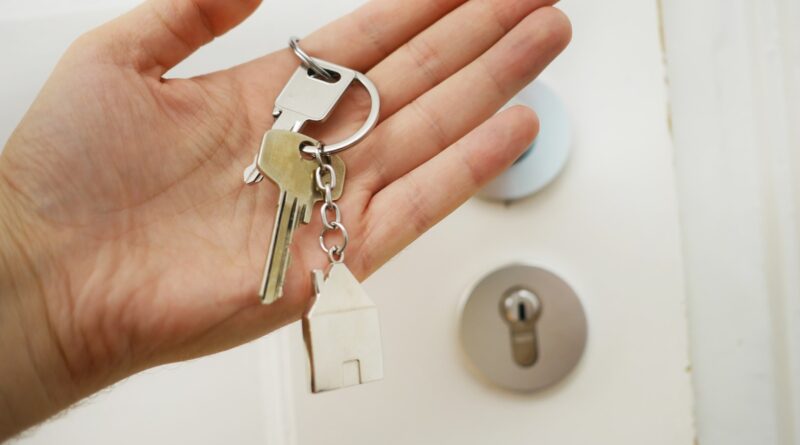How to Secure Your First Rehab Loan: A Beginner’s Guide for Investors
How to Secure Your First Rehab Loan: A Beginner’s Guide for Investors
Rehab loans are a type of financing designed specifically for real estate investors who want to renovate and improve distressed properties. These loans provide funds to cover the cost of purchasing and renovating a property, allowing investors to quickly fix and flip a property for a profit or hold onto it as a long-term investment.
The importance of securing the right financing for rehab projects cannot be overstated. Rehabbing a property can be a complex and expensive process that requires careful planning and execution. A lack of proper financing can result in delays, cost overruns, and other financial difficulties that can undermine the success of a rehab project.
In this article we’ll go through everything you need to start investing in your first project.
Why is the right financing so important
Securing the right financing is especially important for first-time rehabbers who may not have experience with the process. In addition to providing the necessary funds, the right financing can also offer guidance, support, and resources to help ensure the success of a rehab project.
By choosing the right financing for their rehab projects, investors can minimize risks, maximize profits, and build a successful career in real estate investing.
Key Features of Rehab Loans
Loan Amount: Rehab loans typically provide funding for the purchase price of the property as well as the cost of renovations, up to a certain percentage of the property’s after-repair value (ARV).
Interest Rates: Rehab loans generally have higher interest rates than traditional mortgage loans, but they may offer more flexible repayment terms.
Repayment Terms: Rehab loans typically have shorter repayment terms than traditional mortgage loans, ranging from a few months to a few years.
Collateral: Rehab loans are secured by the property being renovated, which serves as collateral for the loan.
Funding Timeline: Rehab loans are designed to provide funding quickly, with some lenders offering funding within days of approval.
Use of Funds: Rehab loans are designed specifically for the purpose of renovating and improving distressed properties.
Qualifying for a Rehab Loan
- Credit Score Requirements: To qualify for a rehab loan, borrowers typically need a credit score of at least 620, although some lenders may require higher scores.
- Debt-to-Income Ratio: Lenders will also consider a borrower’s debt-to-income (DTI) ratio, which is the percentage of their income that goes toward paying off debt. A lower DTI ratio generally indicates a borrower has less debt and is better able to manage their finances.
- Property Requirements: Lenders will also consider the condition of the property being renovated, as well as the borrower’s plans for the property. In general, lenders prefer properties that have a clear path to increased value, and may require that certain repairs or improvements be made before funding is provided.
Considerations for Choosing the Right Lender
- Experience: It’s important to choose a lender with experience in providing rehab loans, as they will have a better understanding of the unique challenges and requirements of the rehab process.
- Interest Rates and Fees: Rehab loans typically have higher interest rates and fees than traditional mortgage loans, so it’s important to shop around and compare rates and fees from different lenders.
- Loan Terms: Look for a lender who offers flexible loan terms that can be tailored to your specific needs and goals.
- Reputation: Check the lender’s reputation by reading reviews and asking for references from past clients.
- Customer Service: Choose a lender who is responsive and communicative, and who will be available to answer your questions and provide support throughout the rehab process.
Applying for a Rehab Loan
- Documentation Requirements: When applying for a rehab loan, borrowers will typically need to provide documentation such as their credit report, proof of income, and a detailed renovation plan and budget.
- Pre-Approval Process: Many lenders offer a pre-approval process, which allows borrowers to get an idea of how much they may be able to borrow before they begin searching for properties. Pre-approval can also help speed up the funding process once a property has been selected.
- Property Appraisal: Lenders will typically require an appraisal of the property being renovated to determine its current value and potential after-repair value (ARV).
- Contractor Bids: Lenders may also require bids from licensed contractors for the planned renovations to ensure that the budget and scope of work are realistic.
- Loan Application: Once all documentation and requirements are in place, borrowers can submit a loan application to the lender.
- Closing Process: If approved, the closing process will begin, during which the lender will verify that all required repairs and renovations have been completed before releasing the funds.
- Disbursement of Funds: Once the loan has closed, the funds will be disbursed according to the agreed-upon terms, which may include staged payments based on the completion of specific renovation milestones.
- Ongoing Communication: Throughout the rehab process, it’s important for borrowers to maintain open communication with the lender, providing updates on the progress of renovations and any issues that arise.
Why choose a rehab loan for a real estate first project
Choosing a rehab loan for a first project can be a smart decision for several reasons. First, rehab loans are specifically designed for the purchase and renovation of properties, which can help ensure that the necessary funds are available to complete the project. This is particularly important for first-time investors who may not have the cash on hand to cover the costs of purchasing and renovating a property.
Second, rehab loans can provide financing for both the purchase price and the cost of renovations, which can be more convenient than obtaining separate loans for each. This can simplify the borrowing process and reduce the overall cost of financing.
Third, rehab loans often offer more flexible underwriting guidelines than traditional mortgage loans, which can make them more accessible for borrowers with less-than-perfect credit or other financial challenges. This can be particularly important for first-time investors who may not have an established track record of success or significant financial assets.
Finally, rehab loans can help first-time investors build a portfolio of investment properties more quickly and efficiently by providing the necessary funds to complete projects and move on to the next one. This can help investors gain valuable experience and build equity over time, ultimately leading to greater financial stability and success in the real estate industry.


